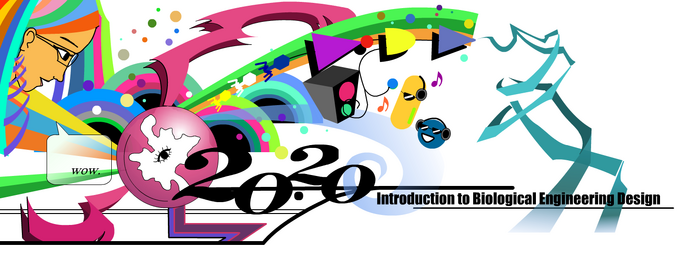2020(S12) Lecture:week 4
Week 4 Tuesday
Today, we’ll begin thinking about how science, technology and society interface--work we'll continue over the next few days. We’ll start by considering historical examples, like Asilomar and the Cambridge City Council hearings. Next we’ll consider future work, like building of a community lab and the DIY-bio movement. This should get us thinking about issues of public safety as it relates to emerging technologies.
Additional note: if you are interested in this topic, be sure to look at the opportunities to be engaged directly through MIT's Public Service Center
"Refrain from using the alphabet"
Turning back the clock: it’s three years after the scientific community raised concern about the safety of recombinant DNA experiments. It’s one month after the NIH issued guidelines to regulate recombinant DNA work. The Cambridge City Council is meeting with scientists from nearby institutions to discuss the consequence of these guidelines for the community surrounding the laboratories and to consider additional resolutions and actions that the city might take to ensure the safety of its citizens. Charlie Weiner made this videotape for the MIT Oral History Program Recombinant DNA History Project, and he has generously shared it with us. The title of the video is,
- “Hypothetical Risks, The Cambridge City Council hearings on DNA experimentation in Cambridge.”
It was recorded at the City Hall Cambridge MA 1976 and though the audio and the video quality have degraded, it provides an invaluable window into the dynamics of these debates, showing the human side of what can sometimes, in retrospect, look like merely academic debates or simplified as over-emotional public reaction.
The cast, listed in the order of speaking:
- Mr. Alfred Vellucci, Mayor of Cambridge (1970-71, 1976-77, 1982-83, 1988-89)
- Dr. Mark Ptashne, Prof. of Biochemistry and Molecular Biology, Harvard University
- Dr. Daniel Branton, Chairman Safety Committee, Harvard University
- Dr. Maxine Singer, Biochemist, National Institutes of Heath (NIH)
- Ms. Saundra Graham, Cambridge City Council
- Mr. David Clem, Cambridge City Council
- Dr. Ruth Hubbard, Prof. of Biology, Harvard University
- Dr. Jonathan King, Prof. of Biology, MIT
Just before watching the videotape
We'll review some details about recombinant DNA that are relevant to the videotape: what is a recombinant DNA experiment? What technical advances and techniques are involved in making/propagating recombinant DNA? What has been done with recombinant DNA in the last 30+ years? What hasn't been done? More specifically: what hasn't been done that was of concern at the time these techniques came on line? Beyond keeping these topics and questions in mind as you watch the video, you should also be familiar with the kinds of biosafety (then called biohazard) levels that will be discussed and what each level (then called P1, P2, P3, and P4; now called BSL1, 2, 3, 4) means. This can be done by watching the BSL video that is here.
After watching the videotape
As a class we will consider the following exchanges and what they tell us about the considerations numerated above. The quotes (transcribed here as accurately as I can render them!) are presented in the order in which they appear in the videotape itself.
Videoclip 1
Alfred Vellucci:
“Refrain from using the alphabet. Most of us in this room including myself are laypeople. We don’t understand your alphabet. So you will spell it out for us so that we know exactly what you’re talking about because we are here to listen”
Videoclip 2
Dr. Mark Ptashne:
“Let me begin by giving you a blanket statement of fact. No known dangerous organism has ever been produced by recombinant DNA experiments. …You must realize that unlike other real risks involved in experimentation, the risks in this case are purely hypothetical…I believe it to be the opinion of the overwhelming majority of microbiologists that there is in fact no significant risk involving experiments authorized to be done by the federal guidelines in P1, P2 or P3 laboratory.”
Videoclip 3
Dr. Daniel Branton:
“Our awareness of these tremendous potentials does not relieve us of the responsibility to exercise the utmost caution in regulating work with recombinant DNA...What we have been asked to do and what we are doing…is to regulate research that does not pose any known threat to public health and which is extremely unlikely to impose such a threat.”
Videoclip 4
Dr. Maxine Singer:
“I must say that I’ve been surprised recently to find myself being put among those who are considered to be unconcerned. I have been concerned and I continue to be concerned. I feel that these guidelines are a very responsible response to that concern....The whole deliberation within the NIH has been a very open process”
Videoclip 5
Mayor Vellucci:
- “Can you make an absolute 100% certain guarantee that there is no possible risk which might arise from this experimentation?
- Is there zero risk of danger? Answer that question later too please.
- Would recombinant DNA experiments be safer if they were done in a maximum security lab, in an isolated P4 lab, in an isolated area. Would this be safer than using a P3 lab in one of the most populated area of the country?...
- Is it true that in the history of science mistakes have been known to happen?
- Do scientists ever exercise poor judgment?
- Do they ever have accidents?
- Do you possess enough foresight and wisdom to decide which direction the future of mankind should take?
The great war poet Joyce Kilmer once wrote: Poems are made by fools like me but only God can make a tree. I have made references to Frankenstein over the past week and some people think this is all a big joke. That was my way of describing what happens when beings are put together in a new way. This is a deadly serious matter, sir/madam/sir. It is not a laughing matter please believe me. If worse comes to worse we could have a major disaster on our hands. I guarantee everyone in this room that if that happens, no one will be laughing then.”
Videoclip 6
Saundra Graham:
“I’m still wondering why this has been dropped in our laps. There must be a great division that the political world, us who are known to make crazy decisions, now has to settle an issue in the scientific world, there must be something terribly wrong going on. That nobody knows what kind of guidelines should be adhered to and that we are going to have to make that judgment on the basis of—excuse my language—national security. I hate using that word. We are not scientists and my God in almost 5 years of being on the council I never thought I’d have to make a scientific political decision. There are all kinds of things the city can do not to build that facility.I don’t understand why it is being placed in our laps if the risk is so low or there is almost zero chance of anything happening to the public, that we have to make that decision. And that makes me leery of what kind of experiment this is really all about because even in the nuclear experiments they never came to the city council for us to make those decisions.”
Videoclip 7
David Clem and Maxine Singer:
- DC: "Does the NIH fund recombinant DNA research?
- MS: Yes
- DC: And is it also the NIH that regulates that research?
- MS: Yes
- DC: Dr. Singer, do you believe, personally, that there should be civilian control of the military?
- MS: Uh that’s a very difficult question for me to answer personally since I have come as an employee of the National Institutes of Health and it’s a question which obviously is surprising for me because it’s something unexpected and not right on the topic
- DC: Well you see I think it is on the topic because I think that is in fact the fundamental issue here. I really don’t give a damn about a P3 laboratory at Harvard University because I can’t visit that laboratory and discover if it’s P1, P2 or P4 or whatever. I don’t have the expertise to analyze or investigate any type of laboratory facility at Harvard University but it strikes me as very to the point that there is an important principle in this country that the people who have a vested self-interest in certain types of activity shouldn’t be the ones who are charged with not only promulgating it but regulating it. This country missed the boat with nuclear research and the atomic energy commission and we're going to find ourselves in one hell of a bind because we are allowing ourselves to allow one agency with a vested interest to initiate, fund and encourage research and yet we are assuming they are non-biased and have the ability to regulate that and more importantly to enforce their regulation
- MS: Now that I understand your question better, I might say that I share your concerns over that. Nevertheless it is true that the National Institutes of Health thus far has undertaken the most serious analysis of this question.
- DC: The problem I have with that statement is that I can accept at face value your statement that the NIH has gone further than anyone else in terms of trying to establish appropriate guidelines and procedures but I submit to you tonight that that’s not far enough and that it is not worth the so called hypothetical risk to toy around with idea without calling a moratorium on it until we have a better set of guidelines."
Videoclip 8
David Clem
“I find it strange that Dr. (p)Tashne asserts that the reason we want to do this research is that we don’t know enough about the organization of DNA in higher organisms and yet he has and his colleagues have enough knowledge to establish that the risk is minimal. That, to me, seems like a contradiction in terms."
Videoclip 9
David Clem and Mark Ptashne
- MP:"No no what I mean by saying a hypothetical is quite precise. Namely, that unlike dealing with known pathogens, no one has shown that recombinant DNA experiments can result in the presence and production of a pathogen. Do I make that quite clear? Hypothetical in the sense that nothing has ever been demonstrated.
- DS: Alright you made the statement that no known dangerous organism has ever been made by a recombinant DNA experiment. Just what the hell do you think you're going to do if you do produce one?”
- MP:Um well I I As near as we can tell the probability of that that event will occur is extraordinarily low. Now I know you don’t like to hear scientists telling you that there are risks involved but they are extraordinarily low. I can only tell you, indicate to you, that what is meant by that is the risks are less than the typical kinds of risks you engage in everyday, walking across the street, you can disagree with the statement but this is the point I’m making."
Videoclip 10
David Clem and Mark Ptashne:
- DC: "Well what are you going to do if you produce an organism that you know to be dangerous.
- MP: Well the answer to that is it would immediately be destroyed and anything
- DC: You assert that research in a P3 facility gives you that kind of control. That if you produce an organism you can control it and stop it.
- (MP describes reasons for containment then)
- MP: The occasional organism of course will escape, on an ant or on your clothes. Does that answer your question?
- DC: It answers my question but it seems to me that if you’re so able to use some real common sense knowledge that dosage might have something to do with it. That a smaller dose is less likely to be as lethal as a larger dose, then why don’t you use some other common sense that says we ought do this research where there’s fewer people around."
Videoclip 11
David Clem:
"If you want my personal opinion, I don't think you have any business doing it anyway. But that's my personal opinion."
Videoclip 12
Mayor Vellucci:
"For your information, I have placed this resolution and in the hands of the city clerk. I'll read it so everybody can think about it.'Whereas there is still considerable doubt and concern in the safety of experimentation dealing with recombinant DNA may therefore be it resolved that no experimentation with recombinant DNA should be done within the city of Cambridge for at least 2 years and be it further resolved that the Cambridge City Council do anything and everything within its power to enforce this resolution.'"
Videoclip 13
Mayor Vellucci:
"When I was a little boy I used to fish in the Charles River and I woke up one morning to find millions of fishes dead."
Videoclip 14
Ruth Hubbard:
"proposed that these experiments be done in containment facilities (so called), but everyone agrees that such facilities cannot in fact contain E. coli because it will inevitably be carried out by the people who work in the facility, on their clothes, in their hair, on their skin in their throat. And will be communicated by them to other people. It is quite possible that these people themselves will not get sick from these E. coli they carry but that when they come in contact with people who are more susceptible, like for example people who have just taken a course of penicillin that kills all the bacteria in their gut and who are therefore just in process of developing a new culture of bacteria that they may take up large numbers of these strains and may get sick. Another example, newborn infants have no bacteria in their gut and gradually acquire them. Should people doing this kind of work be allowed to come in contact with newborns, should they be isolated from them there are a whole host of question that could be answered by working on animals and that we do not know the answers to at this time. The point is that we don’t know and the people who want to go ahead with the work don’t know because this kind of work has not been done before. The best course, therefore is to be extremely cautious until we know more, particularly with coli because if a dangerous strain of coli gets going, since it can live in us and in so many other places, and can multiply rapidly it can get all over the place before we even know that it is out and after that we cannot call it back."
Videoclip 15
Jonathan King:
"in the first place I’d like to absolutely and publicly dissociate from myself from most of the biologists to who Dr. Ptashne in particular referred to: 'most of the biologists don’t think it’s dangerous. Most of the biologists don’t think it’s of concern.' Most of the biologists I know are turning over in their sleep if they knew this was being said of them over this issue. You were told by Dr. Ptashne that small pieces of DNA introduced into E. coli are not likely to render it dangerous or pathogenic. This is absolutely false. It’s well known in the scientific community that antibiotic resistance is associated with small pieces of DNA introduced into bacteria. These are called plasmids, the same ones that were defined by Dr. Ptashne at the Miles Symposium which took place at MIT last week which was a corporate symposium to kind of push the benefits of this research. A number of scientists presented evidence showing that the pathogenicity of E. coli—the ability to make you sick--- is explicitly associated with small elements of DNA which allow it to stick to your small intestine so it can’t be washed out. The other allowed it to make a toxin that makes you sick. They said there was no danger of escape. I’d like to go down on record as saying this is a patently false statement. In fact it’s absolutely certain that they will escape since in the highest containment facility that ever existed in the United States, where every single person associated with it was highly trained there were 423 cases of laboratory-acquired infections in the time and this is situation where everybody who got sick, who got a cold, who didn’t feel well had to report to a physician who was specially trained and who assumed they were sick. Now I don’t know how the scientists can know that none of these organisms are dangerous because I know that Harvard does not nor does MIT have a program in which every person who works in a laboratory is regularly screened to make sure they haven’t picked up a lab acquired infection. How do you know when some comes in and says 'Gee I was out for the last few days. I didn’t feel good. I had a bug. I had the flu. That it wasn’t something picked up in a lab.'"
Videoclip 16
Jonathan King:
"The guidelines. Dr. Singer talked about the guidelines. I'm personally super upset that a person representing the National Institutes of Health came here and made their presentation on the side of going on. I don't think those guidelines were written by a set of people representing the public and all their interests. That was a group of people essentially protagonists, they were the ones doing the experiments there was no reason whatsoever to believe that it was a democratic representative of the people. Those guidelines are like having the tobacco industry write guidelines for tobacco safety."
|
The exchanges we heard in this video highlight many relevant aspects of emerging technologies, not only recombinant DNA. After we watch the videotape we will consider, as a class, some of the dialog and the lessons we might apply from this history to biotechnologies coming on line today (and tomorrow). These considerations include
|
Week 4 Studio
Science and Society
Part 1: Lego™phoresis
You can find the term "biohacking" and "DIYbio" (for "Do It Yourself Biology") increasingly tossed into conversations, tech review articles (e.g. see this one from February 2012), and presentations. There are examples ranging from "how to" websites to an MIT commencement address. But how much can be accomplished safely outside the confines of academic and industry labs?
Let's try some "backyard biology" of our own. We'll try a McGuyver approach to DNA electrophoresis, running your nice PCR samples from a few weeks ago on a gel made from kitchen reagents and toys.
Cast your gel
This design is a variation of the one shown in MAKE magazine, volume 07
Materials
- small plastic container
- scissors
- masking tape
- legos
- agar-agar
- running buffer
- 500 ml bottled water
- pinch of table salt
- 1/4 tsp baking soda
- microwave
Design
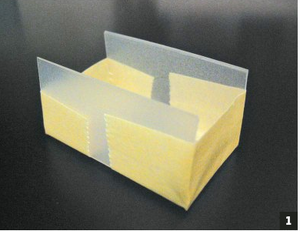


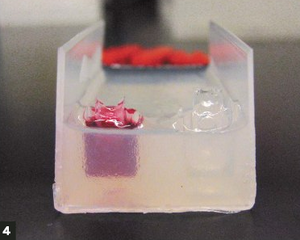
Run your gel
Materials
- steel wire
- large plastic container
- loading buffer, has been added already to the PCR samples you amplified
- remaining running buffer from part 1
- 9V batteries
- Aquarium antimicrobial (ideally 2.3% methylene blue diluted 1:100 in bottled water) to stain DNA in gel after run
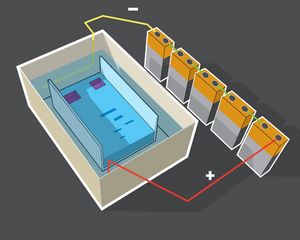
Part 2: Lab-4-U
While your gel sets or runs, consider the following scenario. This scenario is based on a real one, though the names have been changed to protect the innocent!
Cast of characters
- Don: freelance journalist, sent by “The Scientist” to iGEM in 2009 and grew interested in synthetic biology. Co-founder community lab.
- Elaine: PhD scientist, 30 years of microbiology experience in industry and academia. Eager to excite more people about science. Co-founder community lab.
- Nadine: working artist, in residence at a technical college. Her art explores the interface of science and art, trying to be both beautiful and revealing of universal truths. Co-founder community lab.
- Otto: recent graduate of Harvard University, dual degrees in Biology and Business. Considering a job as a teacher at a community college if Lab-4-U start-up venture fails. Co-founder community lab.
- Paul: mid-career computer programmer wanting to expand skill-set in difficult economy. Joined community lab as member, not as co-founder.
Scenario
After seeing the excitement generated by iGEM, Don joins the NYC do-it-yourself (DIY) biology group and starts hosting DNA isolation parties at his house. He meets Elaine, Nadine and Otto in this way. After a few months of talking about their limited ability to try new things due to their limited access to equipment, they decide to find an artist’s loft that they can rent inexpensively and convert to a BioSafety Level 1 laboratory facility. Otto proposes a “fee-for-service” model to this business venture, selling monthly lab memberships. Members have access to the lab’s equipment, as well as advance ticket information for weekend classes in biosafety, biotechnology and synthetic biology. The money they generate from memberships and workshops should pay for the rent, the needed reagents and, eventually, their time. It takes almost two years to realize, but eventually they get the needed permits from NYC, get some start-up funds that enable them to buy used lab equipment from eBay, and open their doors in December of 2010. Within the first month, their weekend workshops are oversubscribed, and a handful of people have joined as members, willing pay a small monthly fee for at least the next 6 months.
One of the new lab members is Paul, who finds biological engineering fascinating. He does not yet know what kind of project he’d like to work on in the lab.
Another of the new lab members is Yuri. He is a PhD scientist at New Jersey Medical Center, whose work focuses on tuberculosis resistance. He is a Russian born scientist, trained to work with dangerous microbes and viruses. Before coming to the US, Yuri was interested in bacterial viruses (called “phage”) and was trying to isolate phage that could attack and kill P. acne, the bacteria that cause facial acne. He has joined the community lab hoping to continue his phage and acne experiments on the weekends. He cannot carry them out in his lab at New Jersey since they may cross-contaminate the TB experiments of others.
All experiments that member’s propose must be approved by the 4 founding members. They consider the safety, public relations, scientific validity, and financial repercussions of denying or approving the work. Yuri’s proposal is the first experiment the founders must consider
You will take on a role as one of the founding members or as Paul, a lab member, and offer a GO/NO GO decision.
First: Data collection
Once you have been assigned a role, meet with the others who have that same role. Confirm that you understand your part and then spend a few minutes reading about P. acne and bacteriophage. Then think about the kinds of reactions and questions your character might have for Yuri’s proposed experiments.
Next: Meet as a community
We'll reshuffle the groups and you will gather as one of each character to speak your ideas, question one another, and then decide whether to approve this work or not. In your groups, make a list of
- the reasons to go forward with the idea,
- the reasons to back-burner it and
- your GO/NO GO decision. NOTE: Paul does not get a vote!
Please appoint a note-taker in the group or someone who, at the end of this activity, could report out about the kinds of discussions you had.
Part 3: Project work with your senior mentors

You should be in teams now working to refine your ideas to 3 distinct ones that could be presented as part of the 3 ideas presentation. Assign members of the group particular tasks so you can start to work on these in greater detail.
|
In advance of our guest lecture tomorrow please read these two short and very recent articles that are about or are written by our guests:
After you read these articles, please think of a follow up question you'd like to ask about either one (or both).You should come to class tomorrow with at least one question written on an index card. You do not need to put your name on the card, but you will have to turn yours in when you arrive. We may have time to ask some questions of our guests. For sure, we'll list these questions for our guests before they leave. |
Week 4 Thursday
Guest lecture: President and VP of Genspace
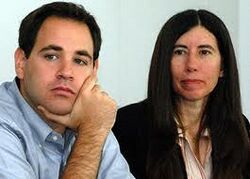
|
Before Friday, please remember to add some thoughts to the class blog. This will be the second of 6 entries you'll make this term. |
